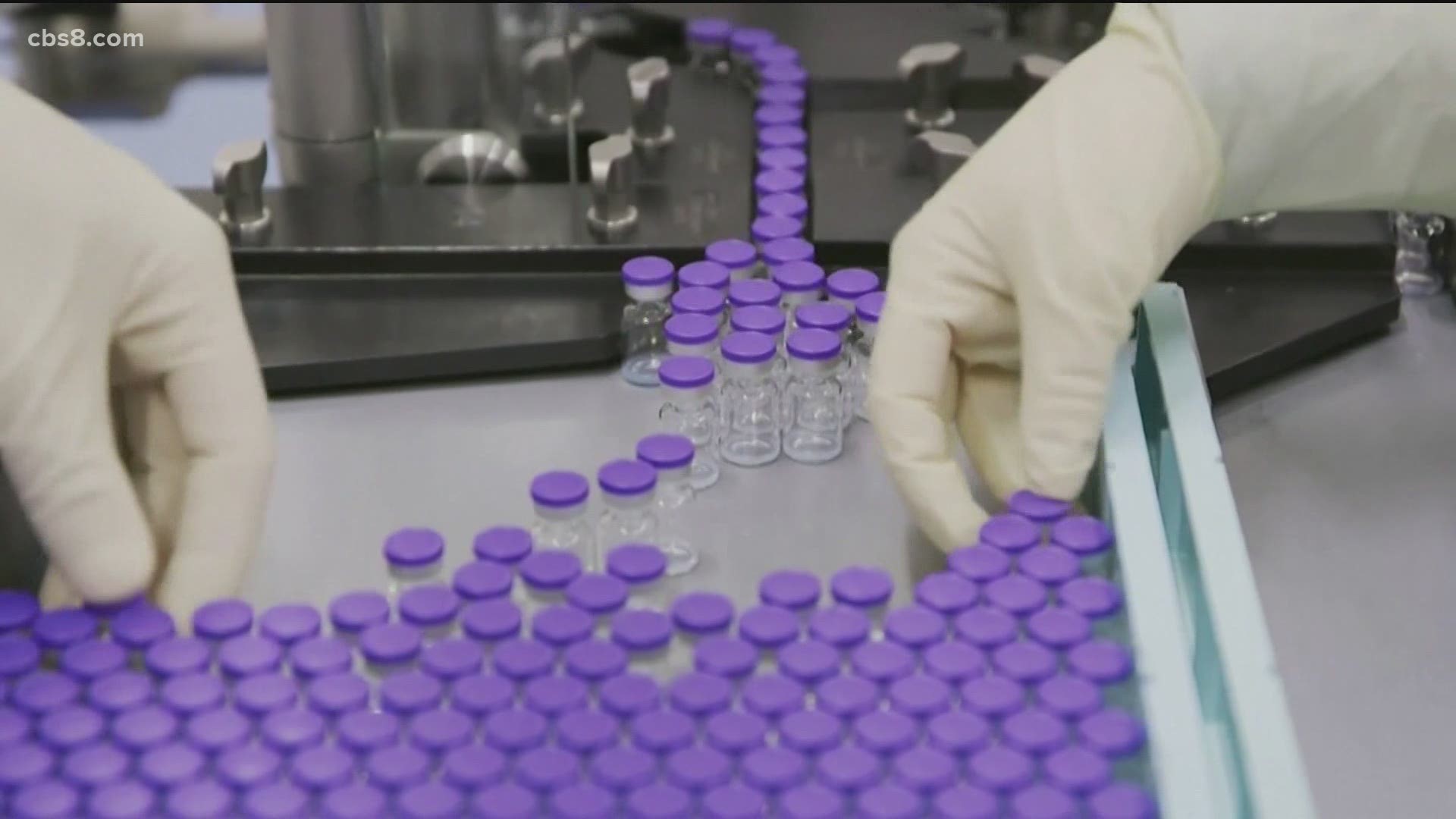SAN DIEGO COUNTY, California — San Diego County hospitals and public health officials continued making plans to distribute Pfizer’s coronavirus vaccine. It will receive 28,000 vials of the 327,000 that California will be allocated, which is proportional to the population.
The California Department of Public Health identified Rady Children’s Hospital as the region’s central distribution site for hospitals because it has ultra-low temperature freezers that can keep Pfizer’s vaccine at the required -94F. Six other hospitals across the state were also identified as distribution sites with more likely to be added before the vaccine arrives for pre-positioning over the next few weeks.
Pfizer’s vaccine is still undergoing approval from the U.S. Food and Drug Administration. Gov. Gavin Newsom has previously stated California will have its own team of health experts conduct an analysis to shore up confidence in the vaccine.
“The vaccine's implementation will happen at the speed of trust and that is part of the reason why we have built a set of committees, a set of actions and a set of communications with each of you so that we can build that trust to share our concerns as well,” said Mark Ghaly, M.D., Secretary of California Health and Human Services.
The Centers for Disease Control and Prevention allocates vaccines to states and determines the priority levels for distribution. Healthcare workers, nursing home employees and nursing home residents will be the first to receive the vaccine in Phase 1A. People with certain underlying health conditions will be in Phase 1B.
Phase 2 will consist of teachers, school staff, childcare workers, food supply workers, critical workers, older adults, inmates and correctional staff. Phase 3 includes remaining essential workers, children and adults under 30-years-old. Phase 4, which is not expected to begin until mid-spring, is for all remaining Americans.
Once California receives an allotment of the vaccine, CDPH then allocates vaccines to counties and tells manufacturers where to ship them. The county then stores vaccines allocated to its Health and Human Services Agency for distribution to vulnerable populations and provides coordination support. It is also purchasing ultra-low temperature freezers for storage.
The FDA is scheduled to discuss giving emergency use authorization for Pfizer’s vaccine next week.
“We know that meeting is the 10th, next week. We anticipate we should be getting shipments over the weekend or in the following week,” said Wilma Wooten, M.D., M.P.H., San Diego County’s Public Health Officer.
Wooten estimated the county needs 60% of the county’s 3.4 million residents to be vaccinated to begin to achieve herd immunity.
With months to go until that happens, hospitals are beginning to face their greatest challenge since the pandemic began.
On Wednesday, the county set a record for the number of people hospitalized with COVID-19 on a given day for the ninth consecutive day. The state is also closely watching availability in intensive care units. San Diego had 209 people in ICUs across the state, topping a record of 197 set a day earlier.
The totals do not reflect an expected surge in cases expected in the weeks following Thanksgiving.
“In effect, everything we are experiencing now is what we feared we would experience back in May and, frankly, that’s taken its toll on not just our hospitals, but all hospitals,” said Chris Howard, President and CEO of Sharp HealthCare.
He added, staff have seen an influx of patients for the last year when influenza cases spiked, followed by the waves of COVID-19 patients.
They are not expected to see any relief for months.
San Diego’s cases are expected to continue rising over the next few weeks. The county had an unadjusted rate of 30.5 Tuesday and is projected to remain well into the purple tier next week.
“We have 184 adult ICU beds in action, in place, today. We have 25 beds left in the midst of what we believe, over the next 30 days, will be most monumental surge of this virus that we’ve experienced to-date,” said Howard. “We are not, at this point, with where we stand, worried that for the immediate future that we’re going to [be at] ICU capacity and other bed capacity. [The county's hospital groups] are all managing to that and if we reach a point where it’s an extreme circumstance, we will all collect together and meet that challenge as well.”

